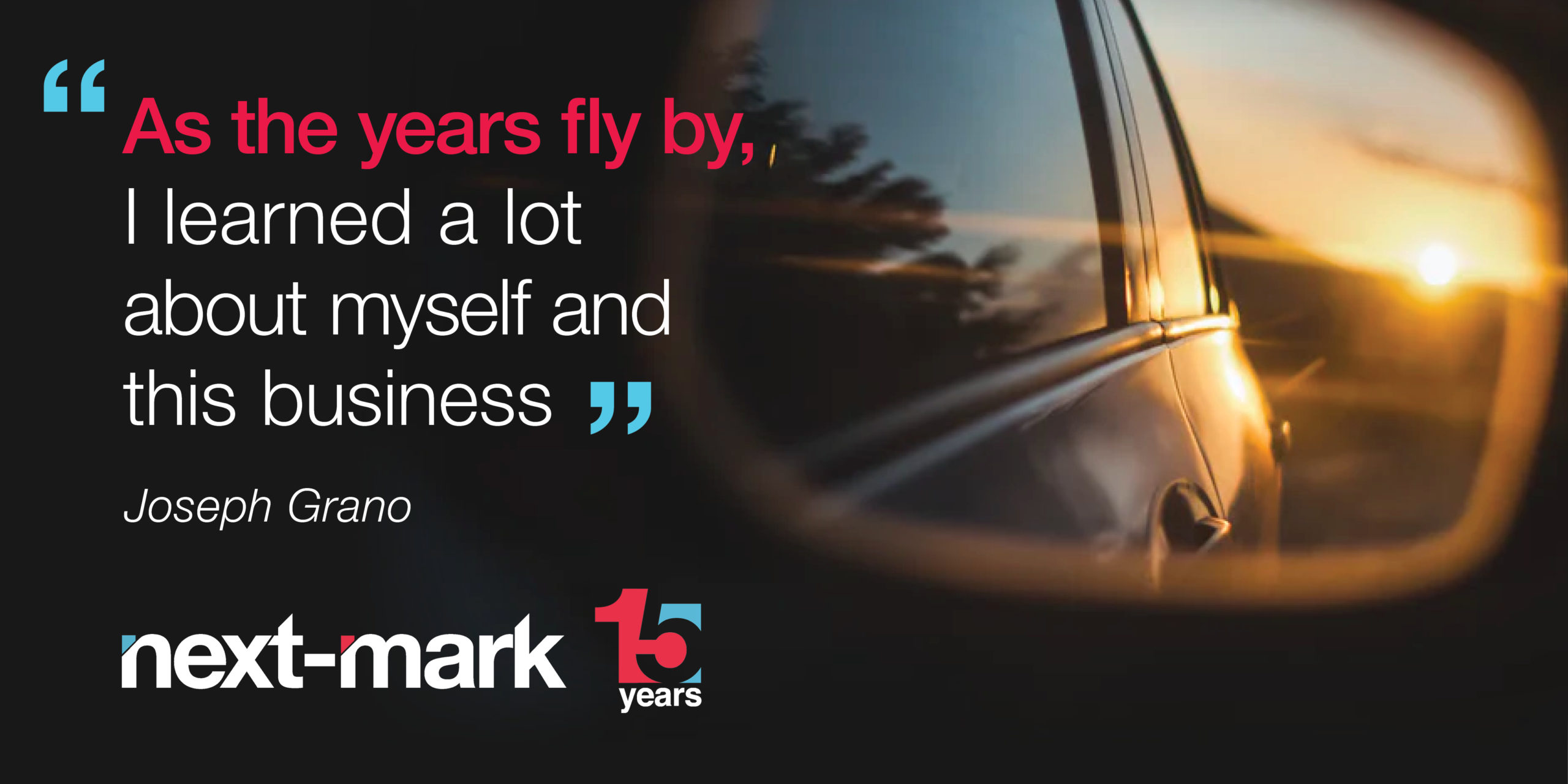



One day, long ago, I was raking leaves next to a busy road in Maine. Yes, there are such things. A car stopped, and the passenger asked me how to get to a certain park. I gave them such clear and concise directions that pride welled up in me as they disappeared down the road. Then it occurred to me that I had given them excellent directions, but to the wrong park. What’s worse, they would need to drive right past me again to get to the right park. So, as I figured how long it would take them to drive back to where I was, I stopped raking and hid inside the house.
In marketing, it’s rare to give your agency’s team members direction that is exactly opposite to what they need. But even the best marketing managers or directors find themselves giving direction that can almost do more harm than good. To help you help someone else (who definitely isn’t you) give better direction in creative projects, here are twelve quick steps.
1. Relax
Relax! Of course you don’t have time to relax when a big, threatening deadline is looking over your shoulder. But you also won’t have the time—or budget—for later corrections caused by giving vague or ambiguous direction right now.
2. Read
Take the time to review any materials being used as background or input for the new creative project. Missing key elements now will likely be harder to fix later on. Don’t just read the current version of the project; also read the overall project direction and guidelines occasionally to make sure you’re still on track.
3. Timing is Everything
If you’re responsible for setting delivery deadlines, be realistic. Whether your team is in-house or an outside agency, everyone is juggling multiple projects and deadlines already. So, setting an unrealistically short deadline is often counterproductive. When unnecessary time pressure takes over, that’s when mistakes get made.
4. Think CTA
Including an effective call to action (CTA) is just good marketing. Using the CTA as a focus will help you produce more effective direction, because it’s harder to stray from precision when you know exactly what you want your reader/viewer/prospect/customer to do next.
5. Get Your Specs On
Whether the end product is digital, video, print, radio, or whatever, it will need to follow all necessary specifications. Designers, for example, will need the exact dimensions of the image size and restrictions on file size. For copy, it’s normally word count. Every organization should have a brand guide that specifies proper usage of logos and colors in all applications, too.
6. Include Everything
They say editing is the hardest part of writing, but this step is actually about including all the elements required for the project. Little will frazzle a designer more, for instance, than adding an image or logo element they’ll need to include in the design after they’re already halfway finished. It’s similar for writing copy, too. In short, try to get everything to the project team at once, before they get started.
7. Copy That
Provide clean copy whenever possible. True, adding comments and marking up copy changes within a PDF can be expedient. And placing the comment exactly where the change needs to happen, that’s a good thing. But providing clean copy in a separate document is still the best way to make sure nothing gets lost in translation. After all, it’s very easy to miss or misunderstand copy changes when they’re embedded in comment blocks instead.
8. Mark it Up
I just gave some love to marking up PDFs for a reason. Whether you use Acrobat, Preview, or another tool to proof and indicate necessary changes—or use the “Track Changes” within Word—aim for clarity in your markups. Having marked-up versions along with clean-copy versions will make it much easier to backtrack at any point, if necessary.
9. Re-read
Sorry, just when you’d started forgiving me for asking you to read project materials more thoroughly, here I am asking you again. But investing a bit more of that time you don’t have will pay project dividends. Be empathetic and as much of a mind reader as possible: if there’s anything that might still be unclear when a project is approaching perfection, now’s the time to fix it.
10. Version Control
Software companies learned long ago that being very specific about versions—though painstaking—would help avoid confusion in the long run. For example, MacOS Catalina is actually Version 10.15.2 (19C57). Establish and stick to a straightforward system for tracking versions as changes are made. This holds true for copy and artwork.
11. Finally FINAL
As much as possible, avoid including the word “final” in the names of project files. This is extremely tempting, and much too common. By the way, capitalizing “FINAL” never prevents making changes later, either. It’s all about version control, so if you’re not using a meta-tag or filing system to identify status later on, at least use meaningful terms such as “print ready” or “with so-and-so’s markups” to distinguish among the many iterations you and your project team have created. As with version control, the goal is to avoid confusion for now and for later.
12. Distribute Wisely
Just as important as the specific direction is how it’s communicated to the project team. Take care to avoid ambiguity regarding who needs to do what. So, if you’re copying several people at once, parse the tasks and call out the team member responsible, in order to make it extra clear.
There are certainly worse habits to kick that giving less-than-perfect direction. But you (I mean your friend) will be pleasantly surprised by the improvements that can be made to creative marketing projects by following these steps.
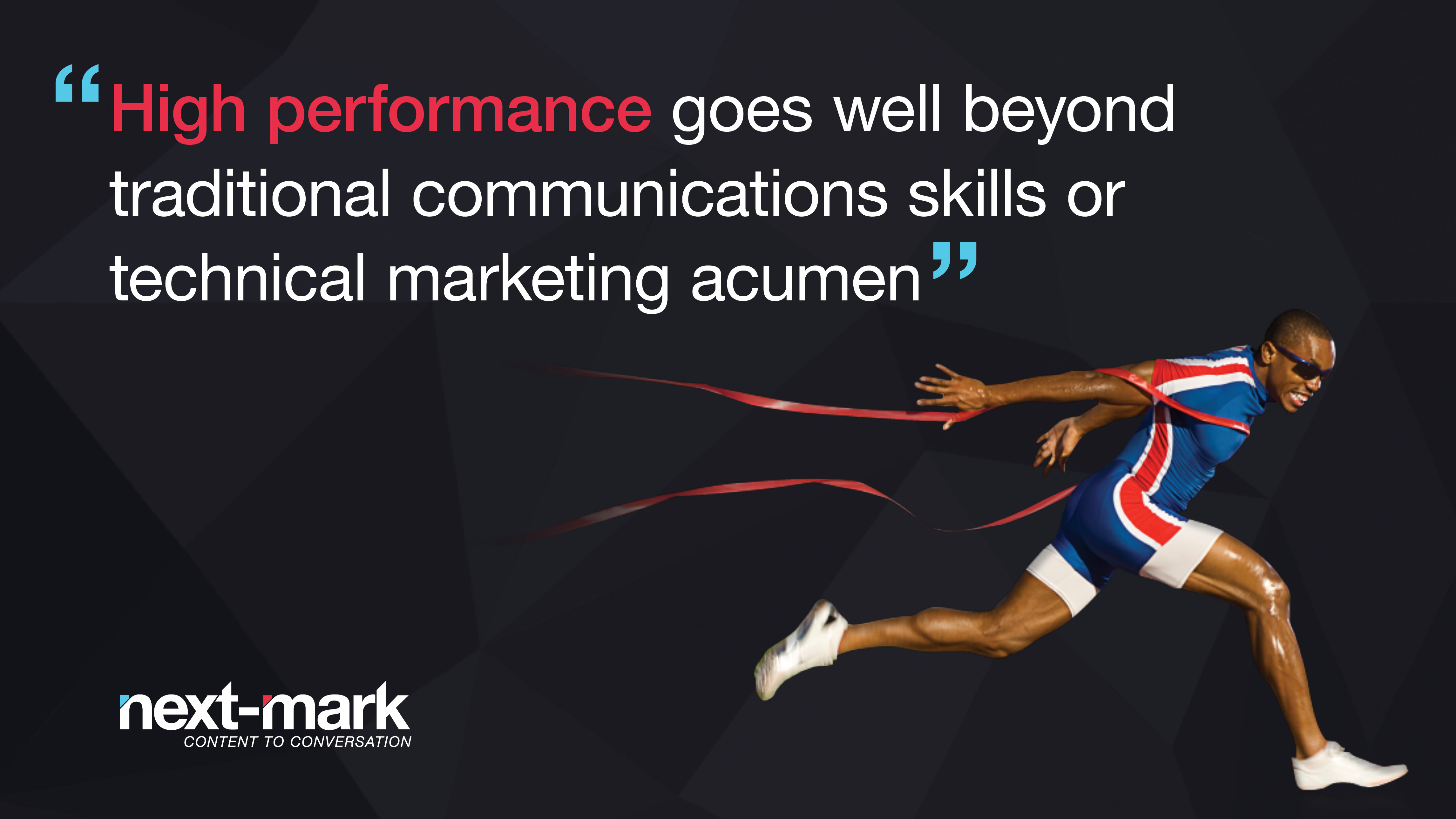
I recently spoke to the Florida Public Relations Association on “Building and Nurturing High Performance Teams.” In preparation, I polled a number of seasoned marketing communications professionals and senior executives, asking for their expertise, candor and insights into building and nurturing high-performance communications teams.
My questions were couched in the key assumption that high performance goes well beyond traditional communications skills or technical marketing acumen, as well as in acknowledgement that we’re talking about people with a lot on their plates, both professionally and personally, from unrelenting deadlines to family obligations.
Still, something this important must get done. And it’s well worth the effort – for everyone involved – as employees are inspired to do their best work and stay in place, contributing to the bottom line for overall business sustainability and success.
To build anything, however, you have to know what it should look like. And that’s what my respondents provided, with their advice culminating in 10 traits that define a high-performance communications team.
Here are a few direct quotes that are well worth remembering as we strive to foster performance that drives excellence.
“True professionals understand that communications is a discipline — it’s not glad-handing or a creative think tank.”
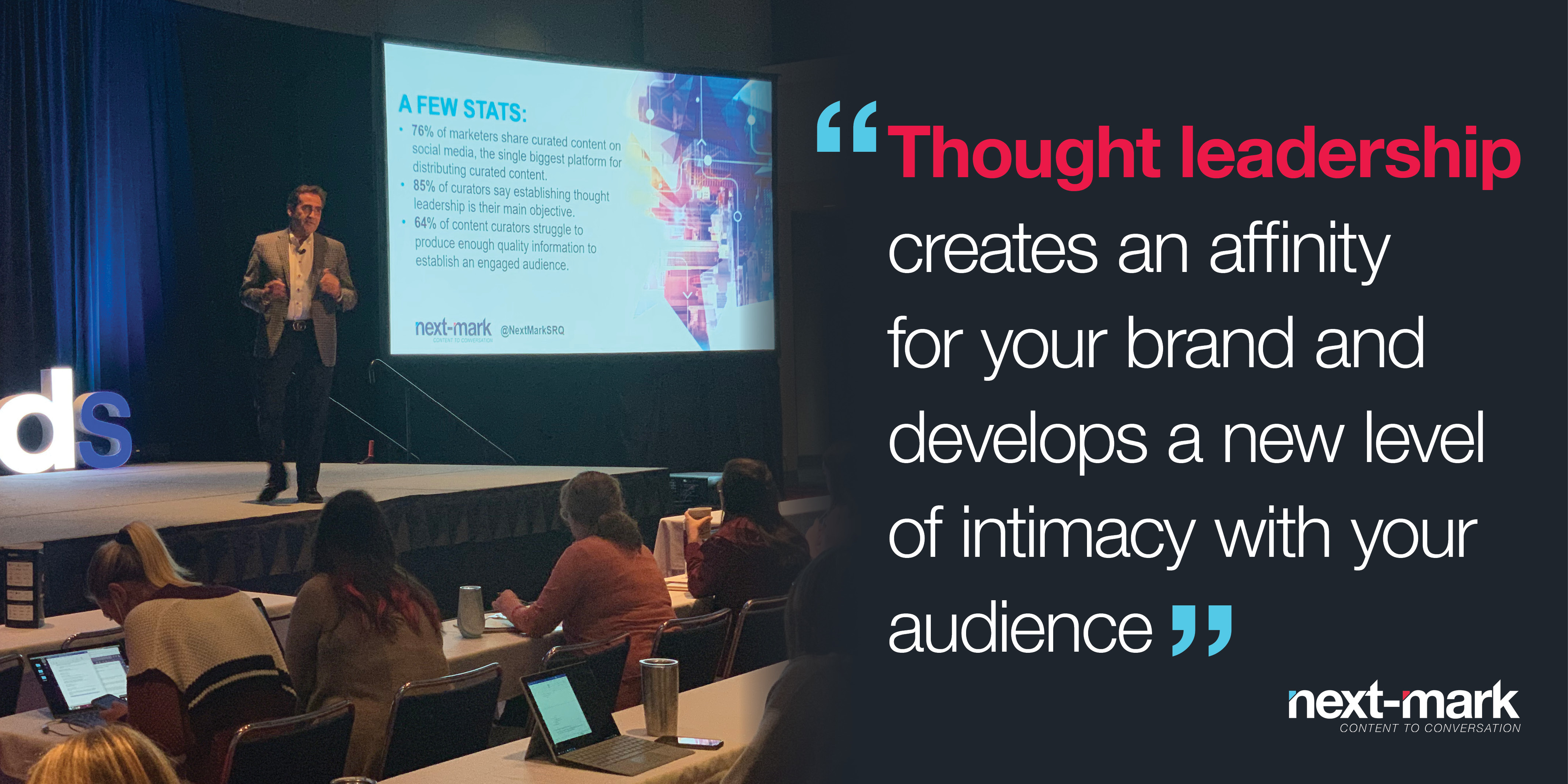
This past week I spoke at the Digital Summit Charlotte on “Amplifying Thought Leadership through Content Creation.” I want to share the key points from my presentation with you here. In a world of too much information, quality information is gold. Being the source of that gold is an advantage in the marketplace and an opportunity not to be missed.
That, basically, is what Thought Leadership Content Curation is all about—gathering relevant, engaging, fact-based information, then adding value and sharing that information with targeted audiences. It involves tapping into the talent, experience and passion inside your business, or from your community, to answer the biggest questions on the minds of your target audience.
This is done with the goal of establishing yourself, your organization or the position you represent as the “go-to” for credible, sustainable and powerful content, enabling you to enter the conversation early in the consumer journey. Such thought leadership also creates an affinity for your brand and develops a new level of intimacy with your audience. It’s also extremely cost efficient.
When I say “thought leaders,” I’m not talking about self-appointed pontificators. Instead, I’m talking about informed opinion leaders who are trusted, inspirational and aspirational.
Ready to raise your visibility (a.k.a. amplify your thought leadership) in your space? Here are 10 steps to guide you in launching a sustainable Thought Leadership Content Curation program for your organization:
A few points to consider:
And throughout it all, remember:
There is a wealth of thought leadership content that is never promoted to its full potential. Make yours work for you and your brand.
If we can help with your next thought leadership initiative, please contact us, We can be reached at 941.544.2765 or by email. For more information about all of our capabilities, view our Online LookBook.
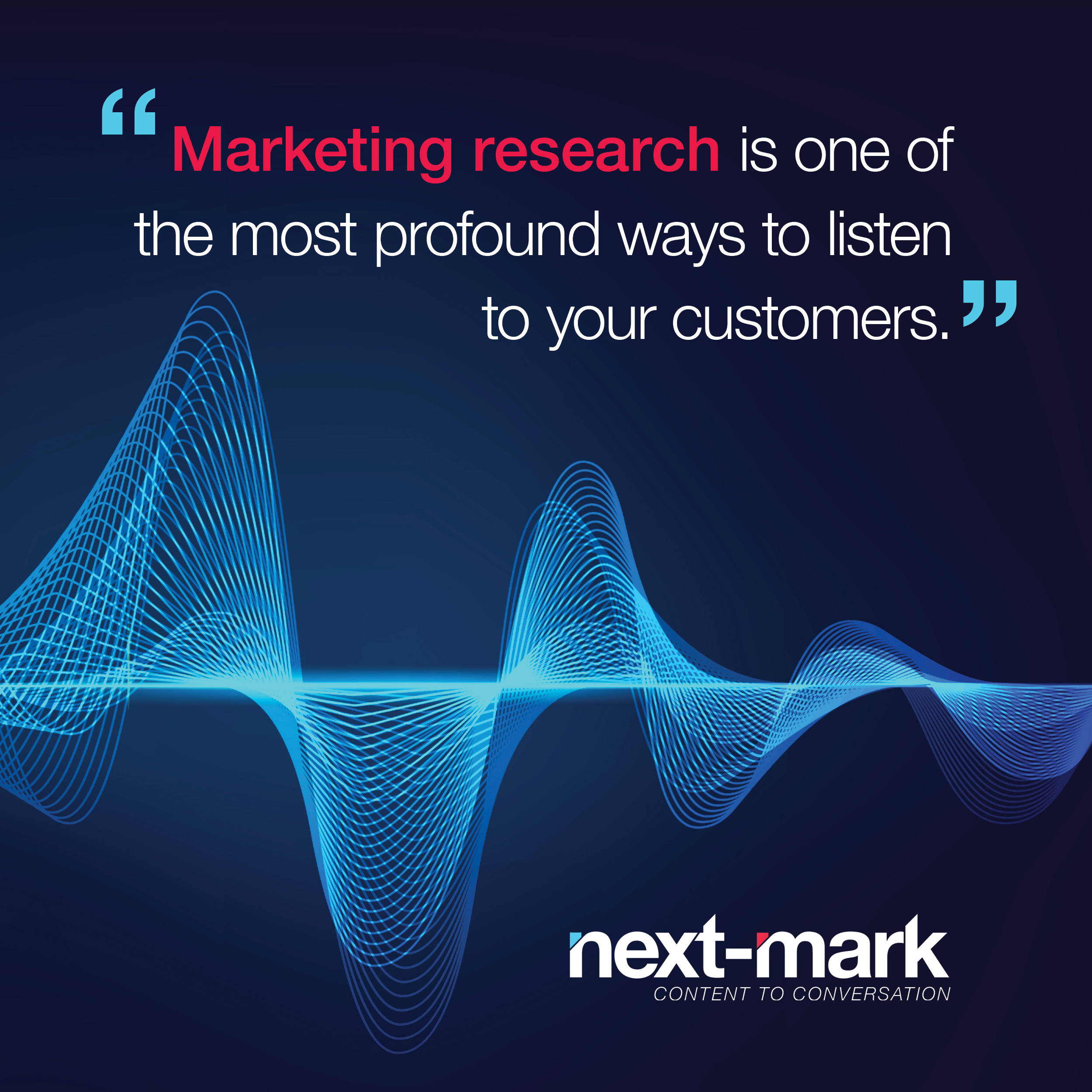
Marketing research has one primary purpose: to fortify decision-making. Marketing Research should always fit within a larger scheme of strategic intelligence. This enables you to gain a knowledge base that is comprised of data, ideas, and business drivers. Within each are specific information sources useful and vital for decision-making. It is one of the most profound ways to listen to your customers.
It can support a very specific question or it can be a “compass” pointing your organization in the right direction. Whether you want to measure client or employee satisfaction, identify attributes for a new product or generate new ideas for your business, here are ten points to consider:
The Next-Mark team has conducted a wide-range of marketing research studies including brand research, employee and client satisfaction, product research, pricing analysis, among others. We creatively design and execute market research engagements to deliver insight, experience, and highly reliable marketing research results.
If you are considering a marketing research study, contact us and learn how we can assist, Please give us a call at 941.544.2765 or email us to get in touch. For more information about all of our capabilities, view our Online LookBook.
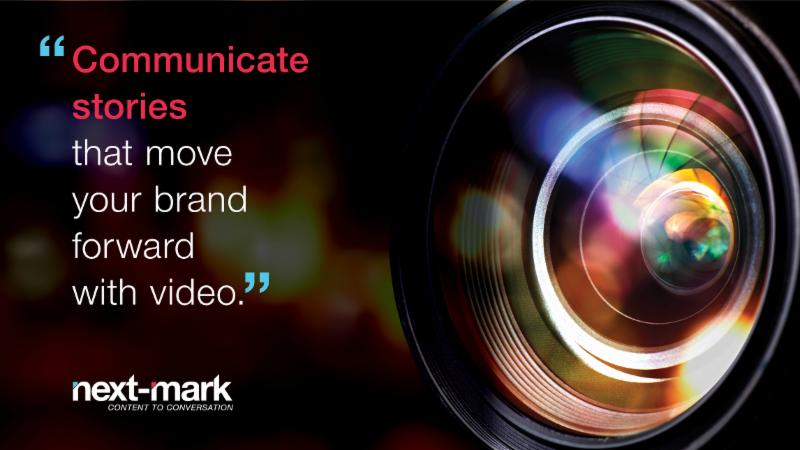
Whether it’s online, corporate, YouTube, a trade show booth or kiosk—whatever the device—your company should be using videos to further its cause. For business, videos can take many forms and serve a wide range of purposes. Live action, motion graphics, interviews, whiteboard animation, voiceover, and music can be used to communicate stories that move your brand forward with video.
As with anything in business, starting from a strategic standpoint will always pay dividends. Some videos will need to sell a vision, others must explain a product concept or teach essential skills. Still others will leverage capturing live events in a way that can be shared and extended to maximize their value. Always start with a clear idea about what each video is supposed to accomplish.
It’s all about the story, and writing the script professionally is the all-important stage when the story really starts to take shape. All the elements—words, sounds, motion graphics, animation—must be ordered and presented in a way that effectively communicates what the finished video will be. Next step: storyboarding.
Videos are built one sequence at a time, and the best (and most cost-effective) way to visualize the whole story is through a storyboard. Walt Disney Studios developed the concept in the 1930s to help bring its ground-breaking animation work to life. Storyboarding is just as important for live-action and explainer videos, as it forms an important bridge between the script and the screen.
Sound must be an integral part of every video. Choose music, voiceover, and any other sound sources based on how to best tell the story and stay true to your brand. Also, though we’re about a hundred years into the sound era for film, many viewers still watch video on mobile or desktop without the audio turned on. Consider adding closed captions during the editing stage. Plan ahead, though. Captions should be handled during the scripting phase as well.
Viewers of news programs have become used to a deliberate overload of text elements on screen. In most cases, this is the exact opposite of the approach to take when producing a video for business. Viewers process images and infographics much more quickly than they do text, so keep text to a minimum and make sure that every bit of text earns its keep by delivering or at least reinforcing your key messages.
If any part of your video needs to convey data, use infographics, never simple numbers. From a two-colored pie chart to stylized people and objects that move and change, your video will communicate with more clarity and power with infographics. By the way, as a client, you won’t need to supply the infographics; your agency will create them for you.
Of course, every aspect of the video should follow brand standards regarding use of logos, fonts, and other design elements. Not so obvious, but just as important to consider: the new video will become part of your brand. Make sure that it has the correct tone and production values it needs to fit in.
That’s not a typo. Timing is important, too, but the point here is to keep it short—but not always. YouTube considers four minutes as the limit for a “short” video. Shorter videos are more likely to be shared, too. But never rush a story. If the script runs longer because you’re covering lots of territory or the topic is complex, then the length of the video will have to stretch as well.
You can increase the value and ROI of every one of your videos by planning them to be parsed later on. Modular videos can be repurposed for kiosks, trade show exhibits, and social media. For training videos, for example, consider breaking a longer video into several smaller ones, each with a step or two in the process. Take advantage of the video platforms’ playlists to organize the videos for viewers.
In most cases, you will want your video to inspire viewers to take action. This can take the form of a call, a visit to a website, or sharing the video on social media. There are even ways to add interactivity such as polls or quizzes to your videos. Especially for longer videos, include a call to action well before the end. It’s related to the old sales warning to “never talk past the close.” If the viewer has already grasped the value of your video’s message, they should have the option to take the next step already.
At Next-Mark, we help clients develop powerful videos, taking them from concept to completion and beyond. If you’d like help creating videos that work effectively as strategic content, please give us a call at 941.544.2765 or email us to get in touch. For more information about all of our capabilities, view our Online LookBook.
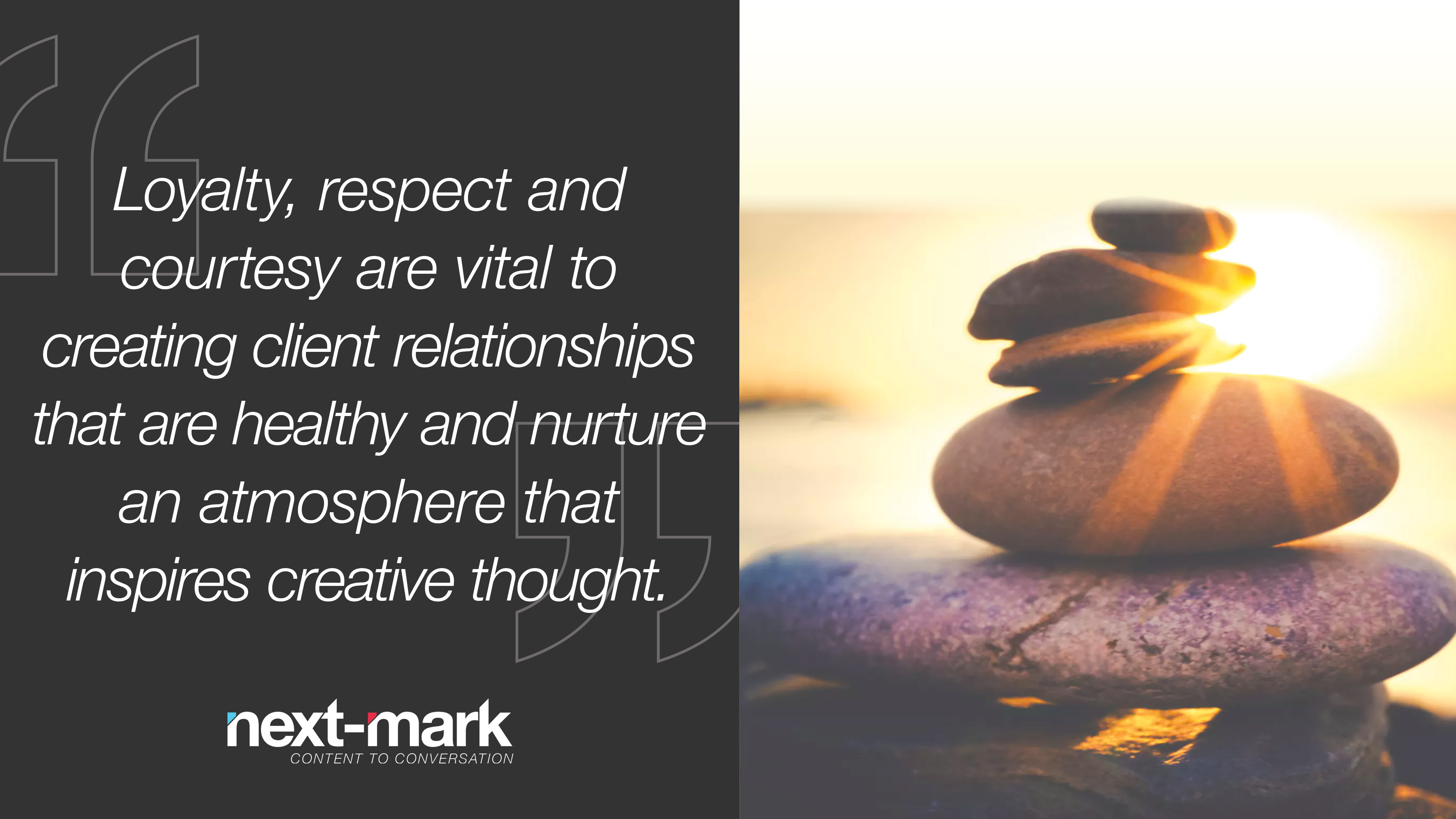
No matter what your business, the basics of quality client relations are the same. Admittedly, these are not necessarily novel ideas. But unfortunately, they’re not always applied.
The following are the actions and attributes we believe are important for healthy, effective client relationships – and the way we commit to doing business each and every day.
When working with our clients, we find it’s best to be fully informed; that is, as much as you want to be. Some clients need regular updates to be comfortable with communications plans; others prefer to just see results. As we consider ourselves part of your team, it’s important to meld into your workflow to make the process seamless and smoother.
We hate to waste time. That’s why we frontload our process, learning as much as we can about a client up front to create a strategic messaging strategy to fuel ongoing, dynamic communication. Our clients find this invaluable, especially when they see that they have grown beyond what they once were – but often are still communicating.
As “hired hands,” we ultimately will do what you want. As a trusted, collaborative partner, however, we will never waiver in first giving you our advice on the best and most cost-effective ways to reach your marketing and communication goals.
In an era of “fake” almost everything, trust can be difficult to earn. For almost 15 years now, we’ve managed to achieve it, however, matching our goals with client needs, meeting deadlines, delivering consistently high-quality work and instilling confidence.
We believe collaboration with our clients is essential to success; both our success and the success of our clients. Your input and guidance fuels our success and provides synergies throughout every engagement.
We always encourage our clients to be perfectly honest with us, as it’s difficult to address issues we are unaware of, and false claims could be made that make matters worse. Such trusted full disclosure can be painful, but it can save a great deal of time, resources, embarrassment and even more serious consequences.
Wait! Isn’t this the same thing as “transparency” above? Not quite. Though often used interchangeably, there is a subtle but important difference. Transparency is a clear view of the present in order to adapt to a reality or improve it. Openness is about human interaction and receptivity to things different from the traditional or one’s own. In our business, that means never saying, “we’ve always done it this way.” New ideas and ways to do things come along every day! Some are even worth becoming the new norm. That’s why we urge clients to join us in keeping minds open to the new and different.
Fairness in this context means treating people with a standard of performance that is consistent, and giving clients fair value for their hard earned money. Fairness is concerned with actions, processes and consequences that are morally right, honorable and equitable.
These are big words here. They’re also a vanishing art in some places. Loyalty, respect and courtesy are vital to creating relationships that are healthy and an atmosphere that inspires creative thought.
In past times, some clients expected a banner headline for the simplest action. Today, it’s a million hits for a pithy quote. Neither was, nor is, likely to happen. When expectations are not effectively managed, it can result in disruption to a strategic plan. That’s why we always will share what you can reasonably expect at each stage, building on it to create a cohesive communications whole that can be every bit as good as that highly coveted “splash.”
If all the above seems obvious – good! It means you put these principles in place at your shop, as well. It also means that you are exactly the kind of client that fuels our enthusiasm for what we do. Thank you to our existing clients who inspire us every day and a hardy welcome to those who wish to join our fold.
We welcome the opportunity to learn more about your marketing challenges and share our capabilities. Give us call any time at 941.544.2765.
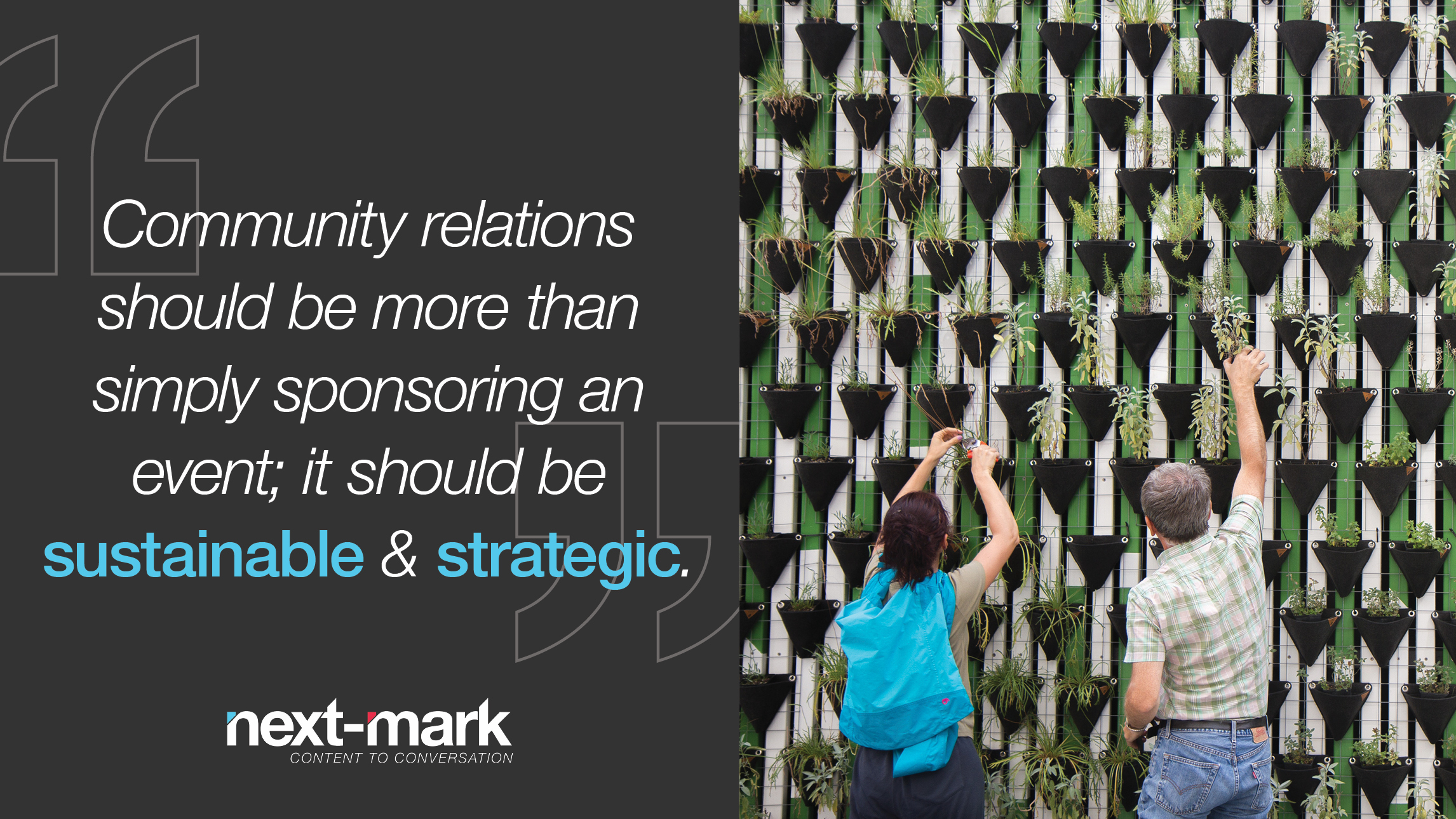
It’s no secret that the success of most companies is influenced heavily by its connection, communication and trust with its community. Whether a group is connected through physical location or through digital mediums, successful community relations can enact change, boost employee accountability and engagement, lead to positive publicity and even increase revenue. Here are a few tips for developing a successful relationship with your organization’s target audience:
Be genuine
Can you imagine Philip Morris sponsoring a walk to end lung cancer? Of course not. While most cases aren’t as clear as this example, you do need to find charities or organizations that align with your company’s core values. In an ideal world, your employees should be involved in any outreach efforts, so make sure they are able to genuinely recognize and speak naturally about the connection between the business and the cause.
Be consistent
Effective connections with your community are not developed in a day; this takes time. Thus, gain trust through continued effort year after year. In doing so, you’ll also establish a culture of giving within your organization, which can lead to increase employee engagement and retention.
Be transparent
Any decision or issue that impacts the community should be openly communicated. This may take the form of town halls seeking feedback on a decision, events where local members can mingle with company representatives, social media outreach, or any other ways your company can reach out to target audiences. Change is inevitable and crises happen, but you’re sure to garner a more understanding response if you’ve built good will with the community through effective, transparent dialogue.
Community relations is more than simply sponsoring a race or volunteering a leader for a board member position. It’s a sustained and strategic effort that will elevate the company and enact good within the communities it serves. Wondering where to start? Give us a call.
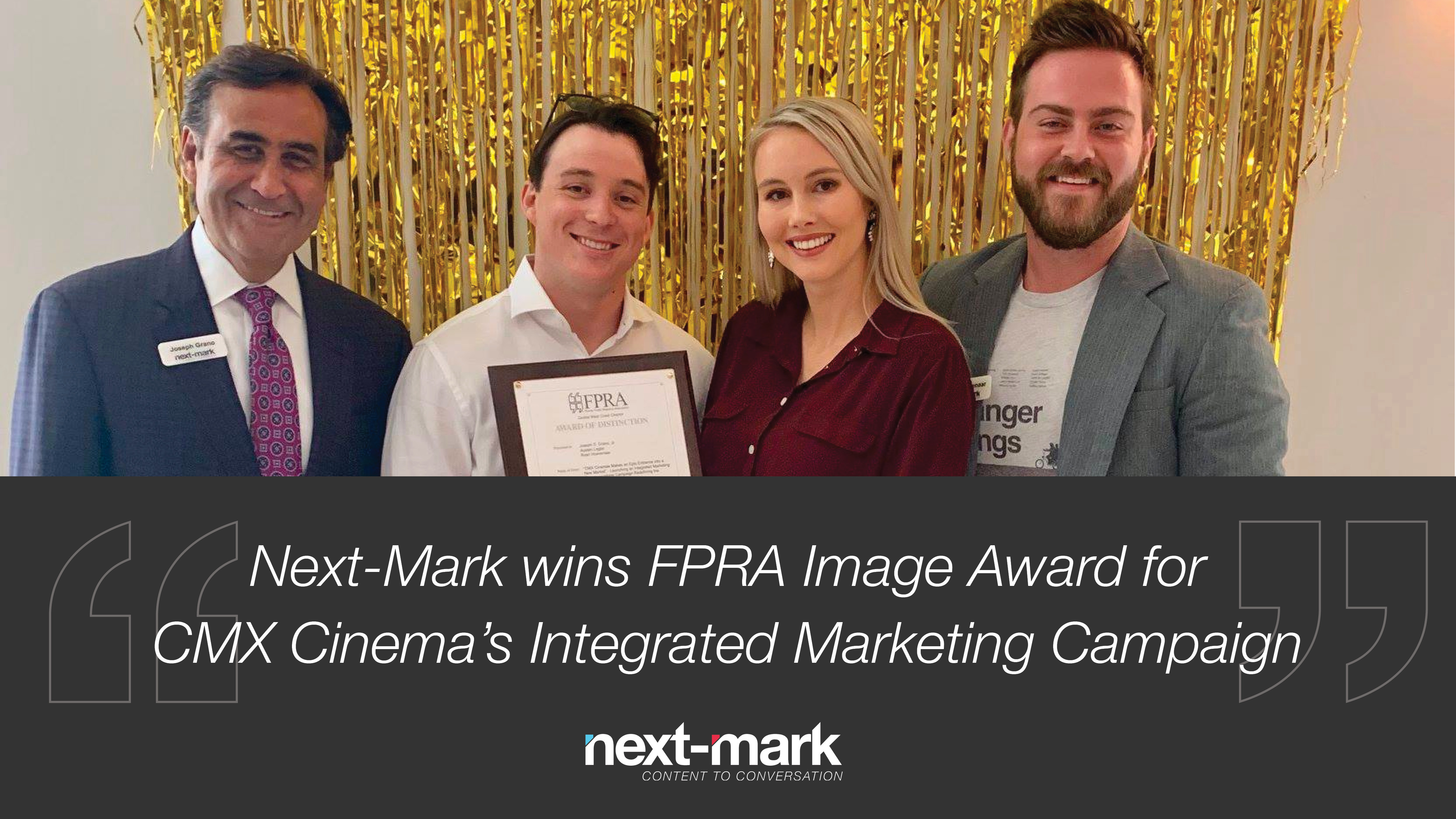
Our team at Next-Mark is excited to announce that we were recently presented with an FPRA Image Award for an integrated marketing campaign executed for international theatre company, CMX Cinemas. FPRA (Florida Public Relations Association) annually recognizes select communications professionals and companies for their outstanding public relations tools and programs through their Image Award program. All qualified entries must demonstrate excellence in marketing and/or communications and incorporate sound research, planning and evaluation.
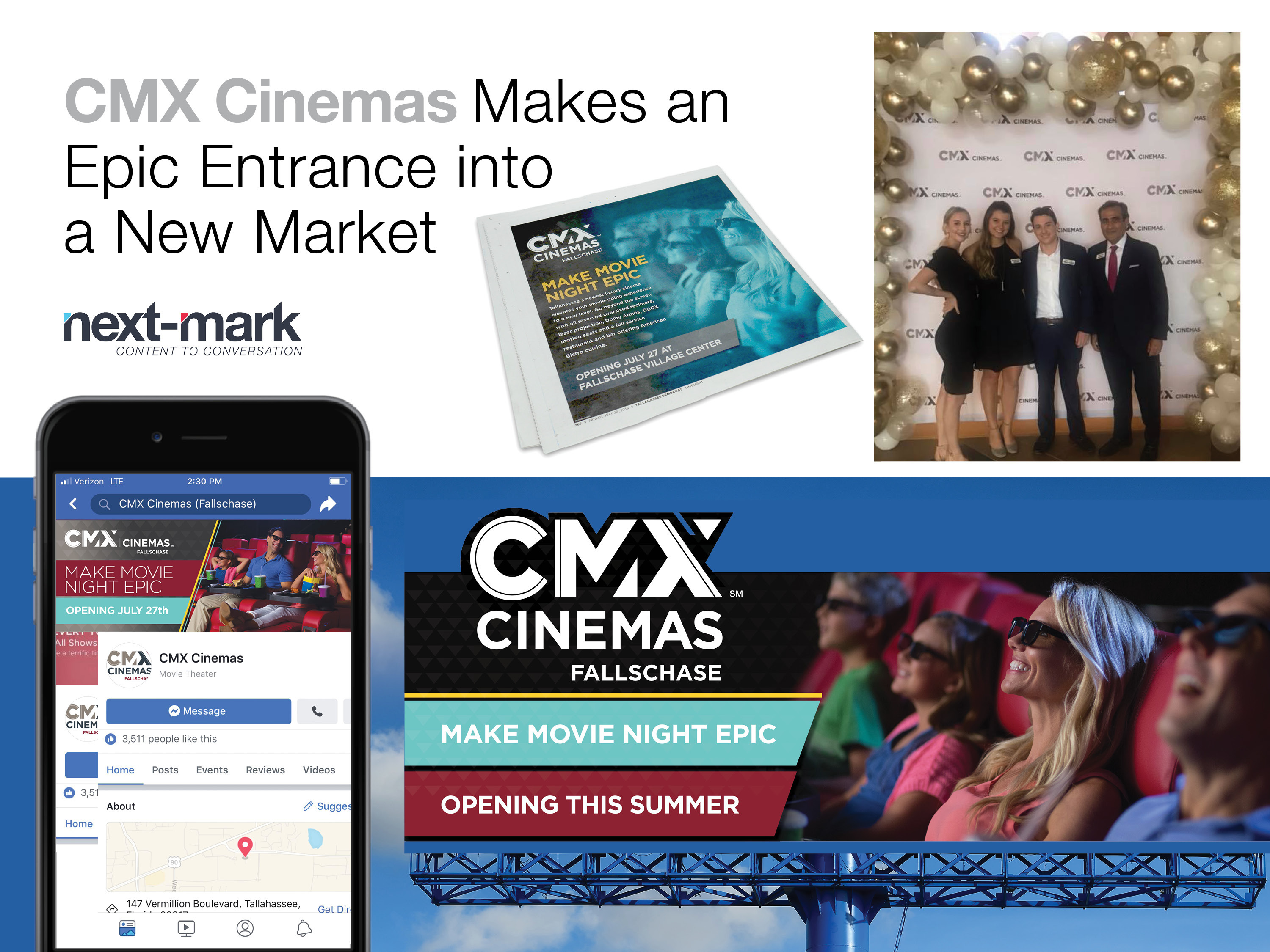
Our winning campaign – titled “Make Movie Night EPIC” – was created for the launch of CMX Cinema’s new luxury theatre in Tallahassee, FL. During this engagement, we implemented an extensive marketing communications built around theme of “EPIC” that was blended into every aspect of the campaign. We also executed a comprehensive public relations and digital plan which led to coverage in multiple high-profile publications and generated significant exposure for the new theatre.
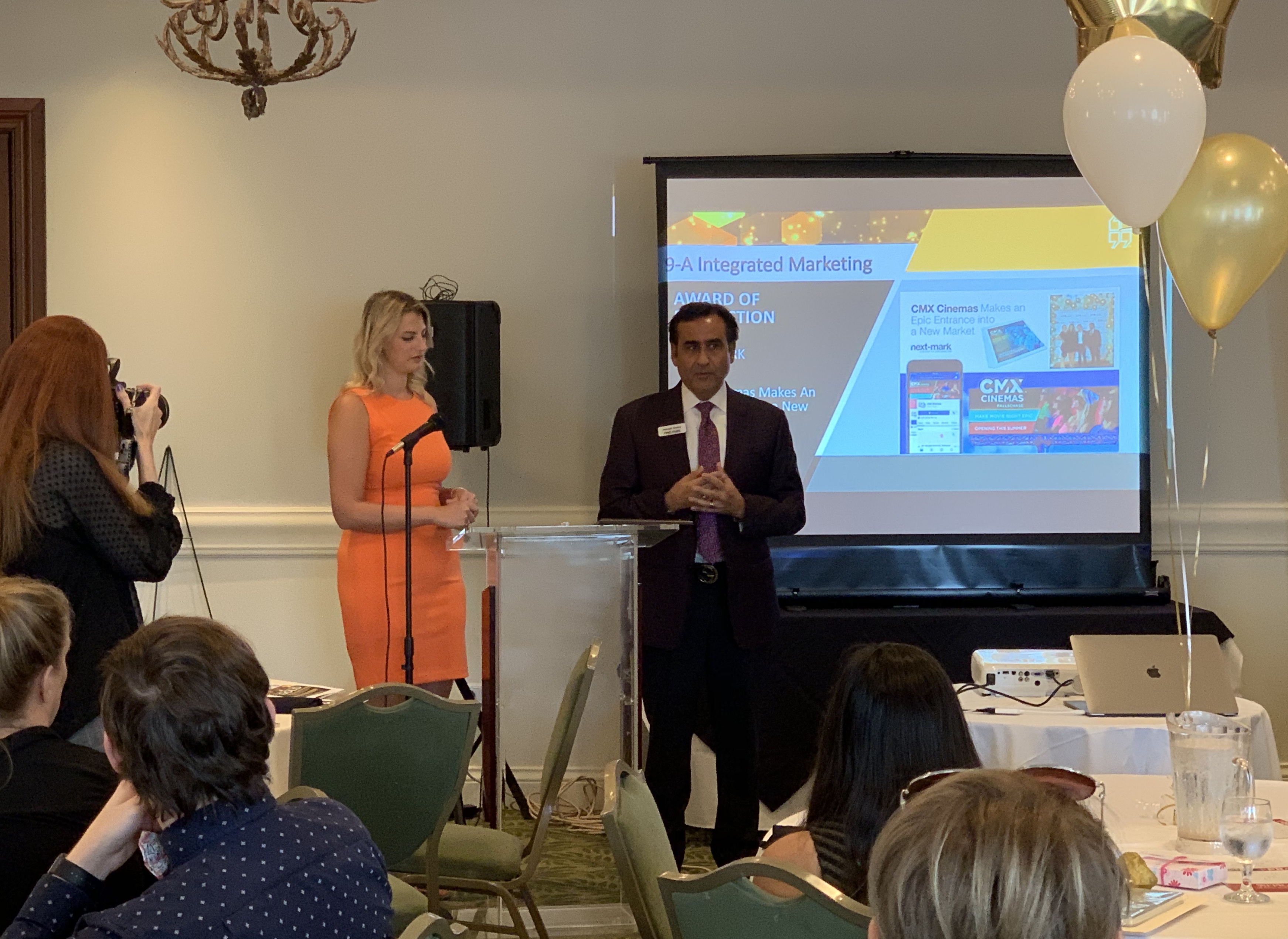
In addition, our team was in charge of the creation of all of the print and digital marketing materials for the theatre company’s paid media campaign, which furthered interest as well as generated significant website traffic. Lastly, our team at Next-Mark had the privilege of implementing a high-profile grand opening celebration that was attended by more than 350 people from Tallahassee and the surrounding areas. Guests strolled down a red carpet into the theatre lobby, which was adorned in eye-catching decorations and floral displays from local vendors. Every aspect of the event highlighted differentiating features of the theatre, from a lavish spread of food made in the theatre’s gourmet kitchen to the exceptional service
Our team is thrilled to be recognized for this “epic” campaign. The CMX team was a fantastic partner, enabling us to create an innovative, strategic plan that exceeded their expectations and produced exciting results.
Prior to the Tallahassee opening, we also had the privilege of assisting with the company’s theatre openings in Daytona and Saint Petersburg Florida. All culminated in successful media campaigns and communication initiatives for the luxury theatre company.
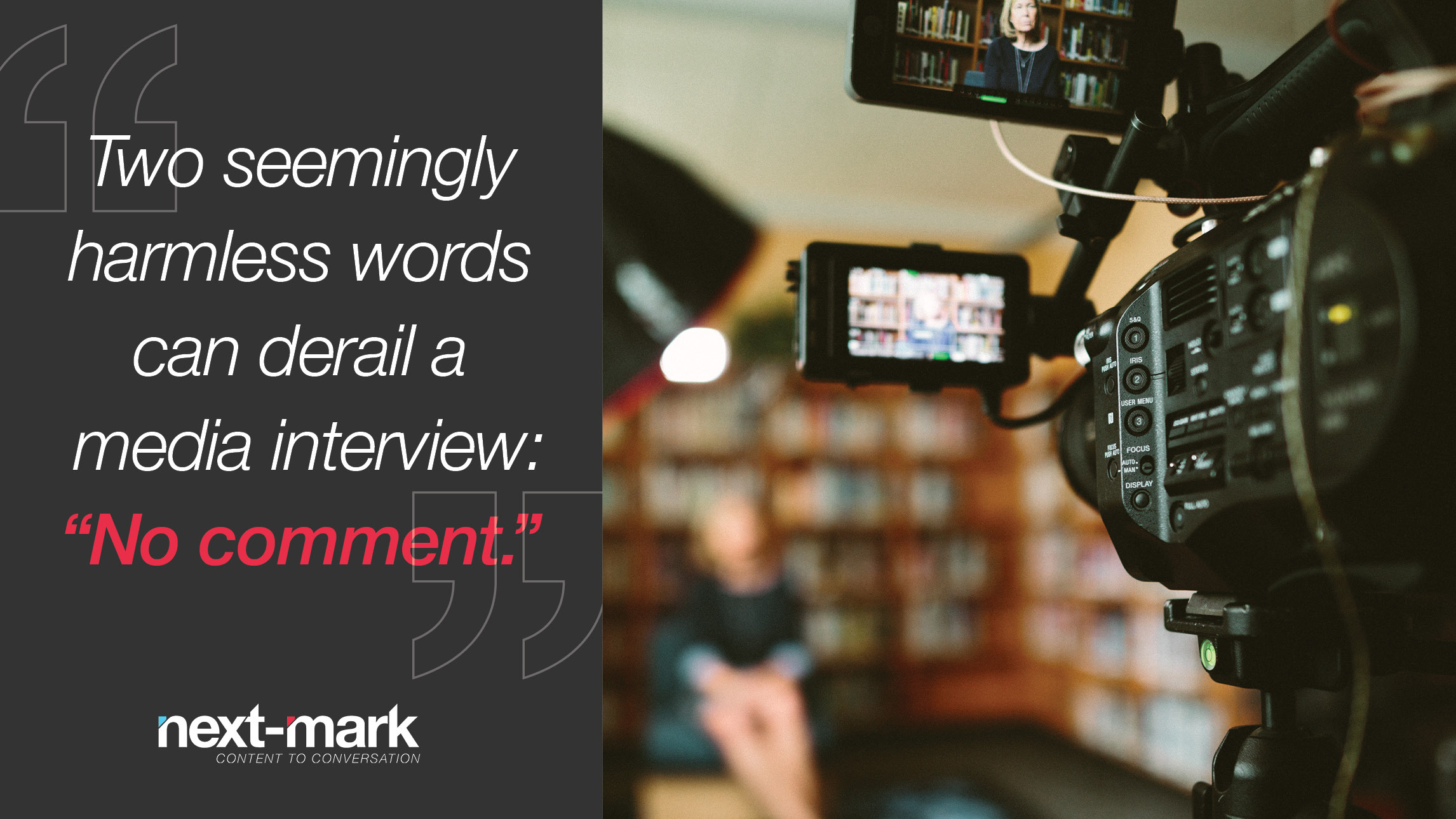
Let’s be honest – even the mostly highly trained communications professionals still get nervous before an interview or a media relations appearance. Positive, “earned” media is as good as gold in the marketing communications world, but a fumble, an off-color joke or an out-of-context statement can quickly shift the conversation to uncharted territory. So what happens when you’re contacted by a reporter armed with hard-hitting questions? Here’s how you can make the most of the media interview/public relations opportunity you’re given.
If you get an unexpected call from a journalist, don’t feel pressured to answer their questions right away. Politely ask the topic of the story and the timeline, then schedule the interview for a later date. Even if you know the topic well, you need time to research the news outlet and prepare. The reporter should respect your request. And if they don’t, simply say that you don’t have time to discuss the topic at this time but would be happy to follow up with an email response when you’re able.
Before you head into your interview, make a list of several points you want to get across in the interview. These should be simple, direct and relevant to the topic the journalist is covering. Be aware of trying to sneak in comments that are irrelevant or seem too “promotional”. If it’s an interview for a print news outlet, the journalist simply won’t include the comments; if it’s a TV or radio interview you might appear self-serving or desperate.
The messaging should also be free of jargon. Practice elaborating on your notable points without using industry lingo. This way, journalists are more likely to quote you rather than interpret your comments themselves.
Finally, remember that reporters love human-interest stories readers can easily relate to or connect with. So whether you’re addressing a crisis situation or simply sharing the history of your company – always focus on people!
There may be certain questions you simply can’t answer. Depending on the situation, consult with your legal and policy experts, as well as your marketing communications team, about what you’re allowed to address and what you need to avoid. Don’t allow reporters to pressure you into giving up information, even if they say they won’t attribute it to you. Additionally, never say “no comment”! Unfortunately, those two seemingly harmless words often imply guilt and can lead the journalist to make assumptions or fill in the blanks. Instead, have a few other canned responses prepared.
Finally, the journalist contacting you is probably on a tight deadline. Respect his or her time by responding in a timely manner and sticking to the topic at hand. If it’s applicable and relevant, suggest that the journalist utilize other sources from your organization to round out the story, and don’t be afraid to give them background information on your company’s internal processes (just know that it’s probably all on the record!). And don’t forget to finish the interview with a warm “thank you!”
Media relations is an important part of growing your brand’s presence. And it’s one part of our many services here at Next-Mark! If you have a story to tell, let us know – we can help find the right news outlet, set up media interviews and hone your talking points.